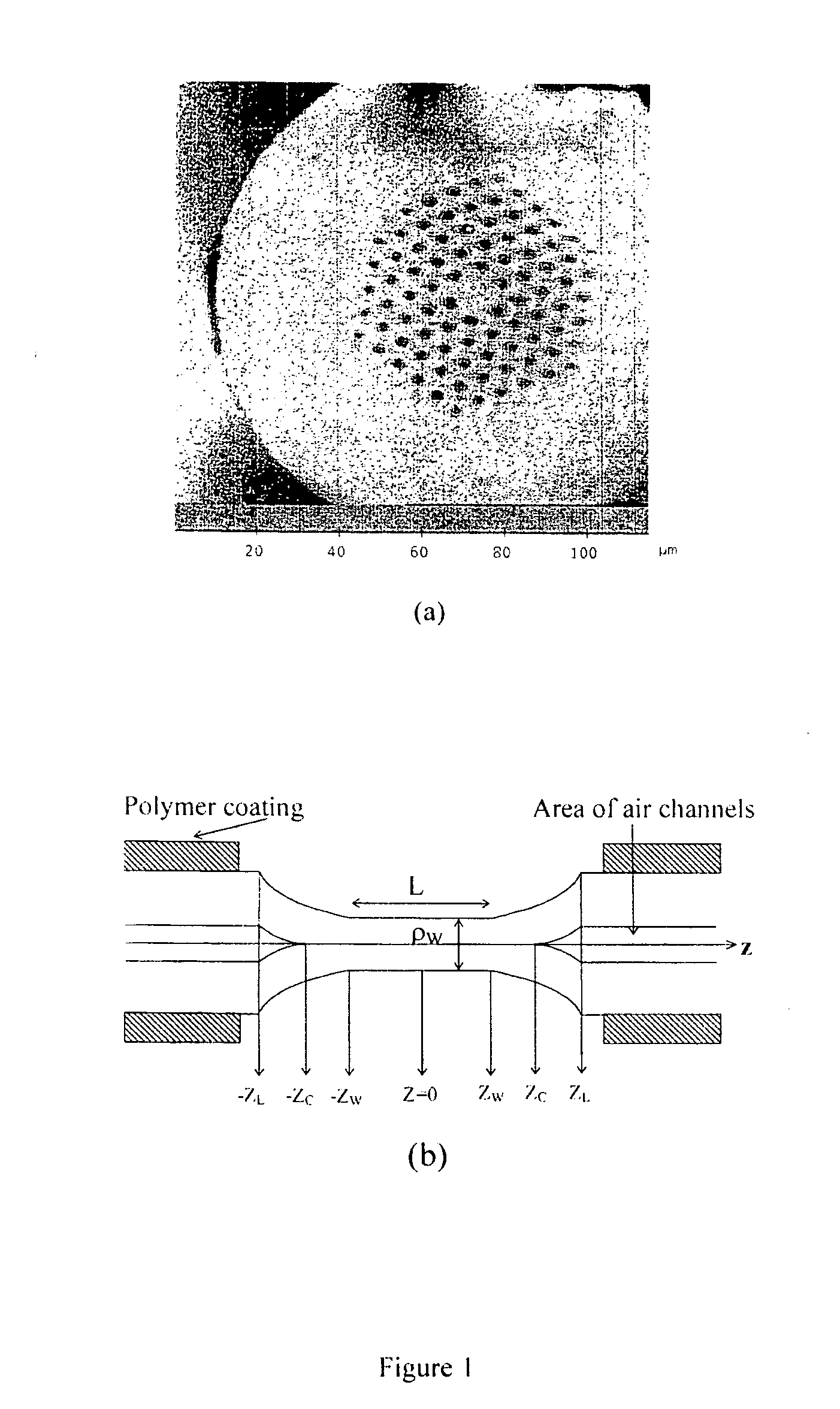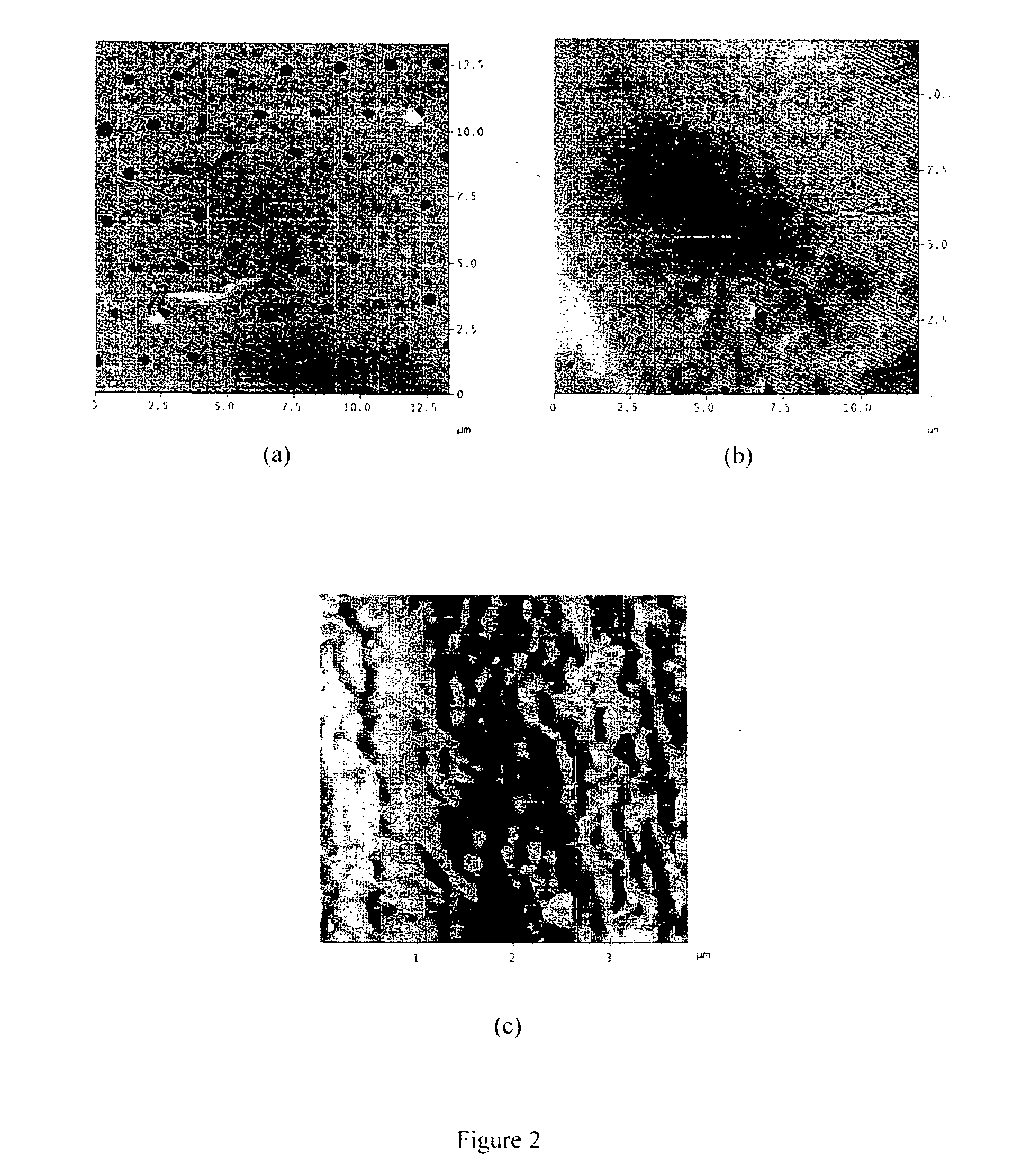Holey fiber taper with selective transmission for fiber optic sensors and method for manufacturing the same
a fiber optic sensor and selective transmission technology, applied in the field of fiber optic devices using microstructured optical fibers, can solve the problems of inconvenient or impractical processing, and achieve the effect of reducing the waist diameter of the taper and increasing the length of the taper
- Summary
- Abstract
- Description
- Claims
- Application Information
AI Technical Summary
Benefits of technology
Problems solved by technology
Method used
Image
Examples
example 1
[0021]The fiber employed to fabricate the tapers was a large core single-mode, made from single material, HF with a solid silica core surrounded by a few air holes in the cladding. The fabrication and properties of such a fiber are described in detail in [12]. As one can see from FIG. 1(a) the untapered single material HF consists of four full rings of air holes in hexagonal pattern (the fifth ring is partially collapsed). The outer diameter of the HF is 125 μm, the diameter of the solid core is 11 μm, the average hole diameter d is 2.7 μm, and the average hole spacing, or pitch, Λ is 5.45 μm. To obtain a nonadiabatic tapered single material HF structure we first inserted the HF into a standard single-mode fiber by fusion splicing both fibers. This allowed us to seal the ends of the HF. The length of the HF was chosen to be about 30 cm. Then the HF is slowly stretched while it was being heated with an oscillating high-temperature flame torch. The temperature of the flame was approxi...
example 2
[0025]By using the same fiber, and the same tapering process as in example 1, a single material HF taper with waist diameter ρw=28 μm and L=5 mm was fabricated. FIG. 7 shows the normalized transmission spectra of the HF before (dotted line) and after (continuous line) the nonadiabatic tapering process. The measurements were carried in a measuring setup consisting of a LED, with peak emission at 1540 nm and 40 nm of spectral with, and an optical spectrum analyzer with resolution of 0.1 nm. It is possible to see from the figure that the transmission of the untapered single material HF is basically the output spectrum of the LED. However, the spectrum of the 28 μm-thick taper exhibits a series of peaks, two of which are higher than the others. For this taper it was investigated the shift of the interference peaks caused by longitudinal strain. The HF was fixed between two displacement mechanical mounts, with the tapered section in the middle. Then the fiber was stretched using the cali...
PUM
| Property | Measurement | Unit |
|---|---|---|
| temperature | aaaaa | aaaaa |
| temperatures | aaaaa | aaaaa |
| hole diameter | aaaaa | aaaaa |
Abstract
Description
Claims
Application Information
 Login to View More
Login to View More - R&D
- Intellectual Property
- Life Sciences
- Materials
- Tech Scout
- Unparalleled Data Quality
- Higher Quality Content
- 60% Fewer Hallucinations
Browse by: Latest US Patents, China's latest patents, Technical Efficacy Thesaurus, Application Domain, Technology Topic, Popular Technical Reports.
© 2025 PatSnap. All rights reserved.Legal|Privacy policy|Modern Slavery Act Transparency Statement|Sitemap|About US| Contact US: help@patsnap.com



